Feb
28
2014
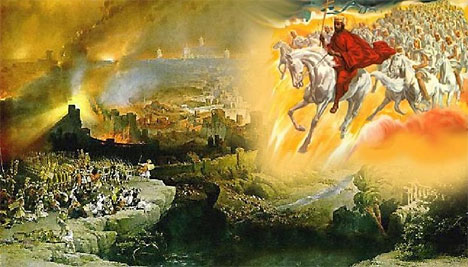
Jesus’ reference to Daniel 7 in Matthew 26:64 (and Mark 14:62) is a source of some confusion. To figure out what is actually going on in Daniel’s vision, we have to go back to Leviticus 16. James Jordan writes:
…when Jesus calls Himself “the Son of Man,” He is referring to Ezekiel, not to Daniel 7 (except perhaps indirectly). Jesus is the Greater Ezekiel. Christians are those who are “like the Son of Man,” like Jesus.
Continue reading
Comments Off | tags: Atonement, Daniel, Ezekiel, High Priest, James Jordan, Leviticus, Systematic typology | posted in Against Hyperpreterism, Bible Matrix, Biblical Theology, The Last Days
Jul
9
2013

And he was teaching them and saying to them, “Is it not written, ‘My house shall be called a house of prayer for all the nations’? But you have made it a den of robbers.” (Mark 11:17)
The same word is used of the men crucified alongside Jesus in Mark 15:27.
And with him they crucified two robbers, one on his right and one on his left.
Is this merely coincidental, or is there something deeper going on? Is there a link between the “white collar” Temple crimes and the “blue collar” criminals?
Continue reading
3 comments | tags: Atonement, Crucifixion, Genesis, Mark, Temple, Ten Commandments | posted in Bible Matrix, Biblical Theology
Jun
16
2012
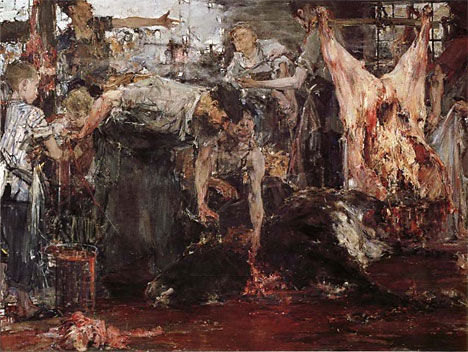 Samiam reviewed Bible Matrix II: The Covenant Key:
Samiam reviewed Bible Matrix II: The Covenant Key:
The history of the Bible is written in blood
Mike Bull wrote,”God desired a world covered by blood.”
Mr. Bull’s latest book spells out the essence of the bible and Christianity: it’s a blood cult. Christians drink the blood of Christ during Mass, They are “covered in His blood”, “washed clean with His blood”, they praise the idea of blood sacrifice over and over again. The highest grossing religious film of all time, Mel Gibson’s “The Passion of the Christ”, was as Mike Bull wrote, “a new cinematic genre: the religious splatter film” and Christians all over the world got what they wanted in buckets… blood, blood and more blood.
Continue reading
2 comments | tags: Atonement | posted in Bible Matrix
May
8
2012
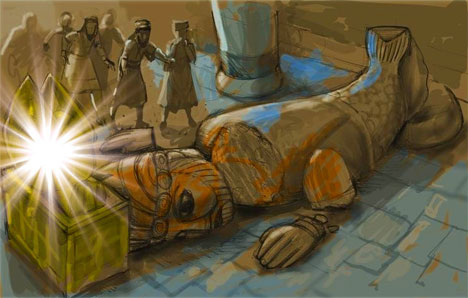 Tinpot Gods and Tinpot Men
Tinpot Gods and Tinpot Men
“Idolatry is the Bible Matrix rendered impotent.”
You get out of life only what you put in, or so the saying goes. According to the Bible Matrix, you are supposed to get out more than you put in.
The single grain of wheat that dies is supposed to bring an abundant harvest. A life is given to God in the faith that He will take what is given and turn it into an increase. This is also found in the Covenant pattern: “Who’s the boss?; who’s His representative?; what do I have to do?; what do I get?; and, what’s next? Obedience brings plunder; disobedience brings plagues. [1]
Continue reading
Comments Off | tags: Atonement, Jeremiah, Literary Structure, Peter Leithart | posted in Bible Matrix, Biblical Theology, Quotes
Mar
16
2012
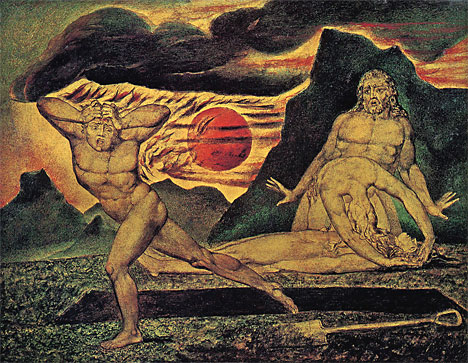 Douglas Wilson writes:
Douglas Wilson writes:
“What is the meaning of ”one is taken and the other left’? This is commonly thought to refer to the rapture — one taken up into heaven, and the other left on earth to kick himself for not praying the sinner’s prayer when he had a chance. On the bright side, there will be a lot of free, unmanned cars available” (Heaven Misplaced, p. 104).
Matthew 24 is a prediction of the Covenant curses falling upon Judah for the last time. One being taken and the other left has to do with displacement. Titus enslaved the best Jews and took them in ships to Egypt.
“And the Lord will take you back to Egypt in ships, by the way of which I said to you, ‘You shall never see it again.’ And there you shall be offered for sale to your enemies as male and female slaves, but no one will buy you.” (Deuteronomy 28:68)
It’s one thing to get the historical fulfilment correct, but there’s a whole lot more going on here. In His speech, as the fulfilment of Israel, Jesus is working through the Bible Matrix, a combination of the Creation week, the weekly and annual Feasts, and the process of Dominion. This means that He is using examples of all the previous historical Covenant structures to make His point. The Covenant cycle has snowballed through history and picked up a lot of events on its way.
Continue reading
1 comment | tags: Abel, Atonement, Cain, Covenant Theology, Deuteronomy, Doug Wilson, Esau, Feasts, Genesis, Jacob, Lamech, Literary Structure, Matthew, Systematic typology | posted in Against Hyperpreterism, Bible Matrix, Biblical Theology, The Last Days
Mar
5
2012
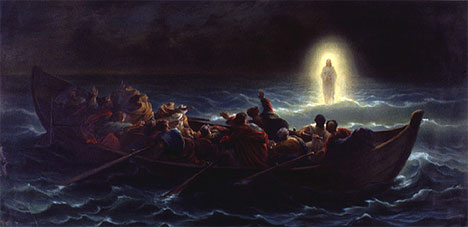
“…and they saw the God of Israel. And there was under His feet as it were a paved work of sapphire stone, and it was like the very heavens in its clarity. But on the nobles of the children of Israel He did not lay His hand.” (Exodus 24:10-11)
Well, I’ve been blustering on about art and “intuition” in generalities for about a week now. Fluffy generalities are exactly the kind of thing that annoys me about many Biblical scholars, and I reckon it annoys God, too. They never seem to get down to specifics, and He is very specific. This shows in His architecture, and also in His literary architecture. So, here, in a section of Matthew 14, is a chance for me to get specific and show you what is possible with this “killer hermeneutic.” [1]
After a brief look at the structure of this passage the other day, I thought I’d spend some more time on it. A closer analysis has revealed an even greater beauty than I expected. (I have briefly referenced the order of words in the Greek to avoid any great missteps, so it may not be perfect, but it’s close.) Much learning hath indeed made me mad but I hope you’ll take a few minutes to see this passage through my eyes.
Continue reading
Comments Off | tags: Atonement, Booths, Covenant curse, Covenant Theology, Feasts, High Priest, Laver, Literary Structure, Matthew, Moses, Tabernacle, Ten Commandments | posted in Against Hyperpreterism, Bible Matrix, Biblical Theology, The Last Days
Feb
8
2012
Atonement and Enthronement

“Jesus does what no medicine man
or witch doctor is able to do.”
And they came to Jesus and saw the demon-possessed man,
the one who had had the legion, sitting there,
clothed and in his right mind, and they were afraid. – Mark 5:15
Rich Bledsoe’s old blog is a goldmine. Here’s an excerpt from The Dysfunctional Family of the Gadarene Madman.
Continue reading
Comments Off | tags: Abel, AD70, Atonement, Cain, Circumcision, Edwin Friedman, Feasts, Genesis, James Jordan, Job, Matthew, Rene Girard, Revelation, Rich Bledsoe | posted in Biblical Theology, Quotes, The Last Days
Dec
23
2011
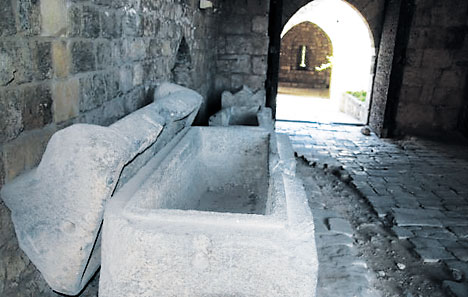
or What’s the Problem with Matthew 27:51-53?
Continue reading
3 comments | tags: Apocalyptic, Atonement, Compromise, Elijah, Elisha, Kings, Literary Structure, Matthew, Resurrection, Revelation | posted in Bible Matrix, Biblical Theology, Ethics
Dec
11
2011
“So David (Sabbath – Creation)
Continue reading
Comments Off | tags: Abel, Atonement, Cain, David, Feasts, Genesis, High Priest, Samuel | posted in Bible Matrix
Dec
9
2011
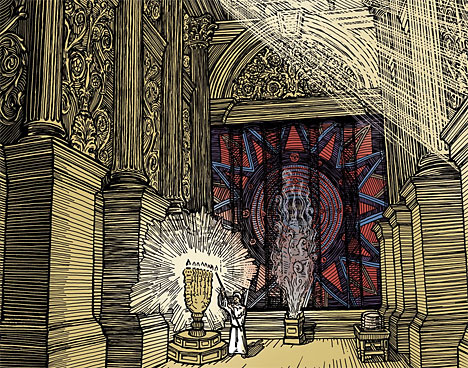
The Living Dead and the Dead Living
Creation: In part 1 we saw that the theme of the first stanza of 2 Thessalonians 2 was the “Sabbath” rest of the church. Paul writes to remove the alarm caused by the “conspiracy theorists” who attempted to disturb it.
Division: The second stanza concerned the splitting of the church into two — those who would persevere despite the growing threat of tribulation throughout the empire [1], and those who would succumb to their fears. The attacks would culminate in the completion of Herod’s Temple and the Nero’s burning of Rome in AD64. The first threw doubt upon the words of Christ concerning the Temple, and the second, though hardly believed, was an excuse to scapegoat this new Jew-Gentile sect, now legally separated from the protection afforded to Jews by Rome. The gospel tore Judaism in two. Then it united those believing Jews with Gentiles. But as in the wilderness, new Israel would be threshed and purified.
Continue reading
Comments Off | tags: AD70, Atonement, Booths, Dispensationalism, Feasts, James Jordan, Literary Structure, Paul, Ray Sutton, Revelation, Ten Commandments, Thessalonians | posted in Bible Matrix, Biblical Theology, The Last Days


































